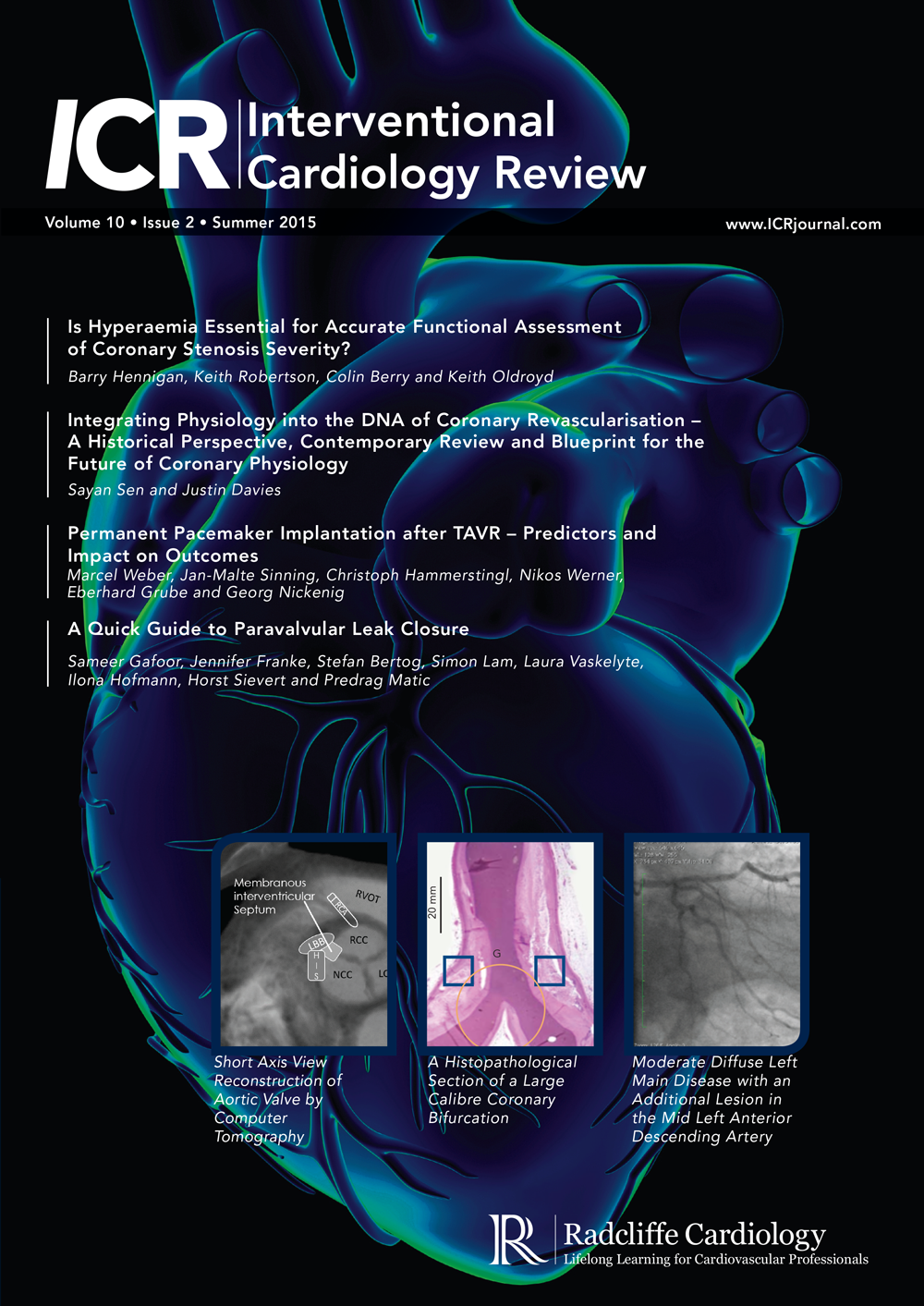ICR - Volume 10 Issue 2 Summer 2015
This issue of Interventional Cardiology Review contains papers by leading proponents of both FFR and iFR. This is a complex field and I am delighted to have experts presenting their detailed but differing interpretations of the available data relating to these important technologies. Advances in both techniques and technology have transformed chronic total occlusion interventions over the last five years and David Smith discusses how vascular access techniques have contributed to improvements in procedural safety and procedural success. In contrast, progress in treating coronary bifurcations has been more limited. Peter O’Kane discusses the Axxess stent, a new technology that offers access to both distal branches without limiting options for their treatment. Marco Barbanti discusses how to avoid the two most feared complications of TAVI: root rupture and coronary occlusion. These complications form part of Mohamed Abdel-Wahab’s discussion of the differences between balloon and self-expandable TAVI prostheses. George Nickenig completes a trio of TAVI papers, discussing predictors of and outcomes following permanent pacemaker implantation after TAVI. It is clear that these issues are becoming increasingly important as we try to assess the role of TAVI in the treatment of intermediate risk patients. The prevalence of atrial fibrillation will mean that Apostolos Tzikas paper summarising indications for and outcomes following left atrial occlusion will be useful to a wide range of different subspeciality cardiologists. Similarly, Sameer Gafoor’s discussion of percutaneous paravalvular leak closure procedures will be useful for both interventional and general cardiologists.








